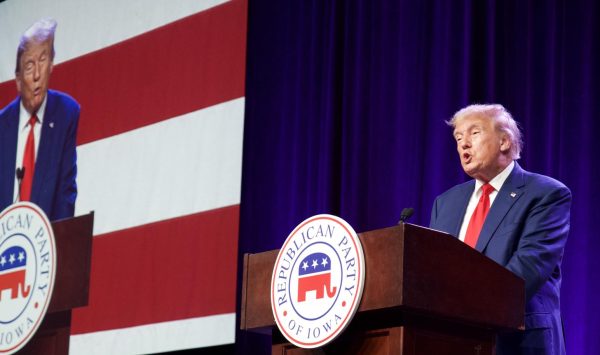Stocks fluctuate on weak manufacturing reading
November 3, 2008
NEW YORK — Wall Street started November on a cautious note Monday, with stocks fluctuating in a narrow range following a weak reading on the manufacturing sector.
Stocks pared early gains after the Institute for Supply Management reported that its measure of U.S. manufacturing activity fell last month to its lowest level in 26 years as credit conditions tightened and as disruptions remained from Hurricane Ike. The trade group reported that its index of manufacturing activity fell to 38.9 in October from 43.5 in September. It was the weakest reading since September 1982 and well below the 41.5 economists predicted, according to Thomson/IFR.
A separate report showed construction spending has fallen by a smaller-than-expected amount in September as a rebound in nonresidential activity helped offset further weakness in home building. The Commerce Department said construction spending fell by 0.3 percent in September, less than the 0.8 percent decline many economists expected.
Analysts are also anticipating weak vehicle sales figures from the auto industry for October — even more anemic than in September, when automakers said fewer than 1 million vehicles were sold for the first time in 15 years.
The data, particularly on manufacturing, support the growing belief that the economy is in recession, hurt by a drop in lending and slower overall spending. But with the Dow Jones industrial average having tumbled more than 14 percent in October — its worst month in 21 years — the market priced in a significant falloff in economic activity. Wall Street must now determine whether the selloff in stocks is adequate, not enough or overdone.
Stephen Massocca, co-chief executive of Pacific Growth Equities, said the economic readings weren’t a big surprise given the hits the economy has taken from the evaporation of lending since September. He said the market’s tepid reaction also reflects the market’s process of forming a bottom after its selloff and investors waiting to make big bets until results of the election, particularly the results in the Senate, are known.
“What we’ve seen was a rally last week taking a dire depression off the table and I think now what we have a severe recession,” he said. “By and large the economy is bad but it’s not as bad as many people think it is. There are still people going to work every day.”
“With the election tomorrow obviously people probably want to wait and see what happens there. I think that’s probably holding people back,” Massocca said.
In late morning trading, the Dow Jones industrial average rose 6.37, or 0.07 percent, to 9,331.38 after rising 86 and falling 41.
Broader stock indicators were mixed. The Standard & Poor’s 500 index fell 0.88, or 0.09 percent, to 967.87, and the Nasdaq composite index rose 7.81, or 0.45 percent, to 1,728.76.
The Russell 2000 index of smaller companies rose 4.28, or 0.80 percent, to 541.80.
Advancing issues outnumbered decliners by about 3 to 2 on the New York Stock Exchange, where volume came to 329.6 million shares.
Trading is expected to remain light Monday, with many investors sitting on the sidelines ahead of Tuesday’s presidential election. Many analysts have said that in general, neither candidate is more favored than the other on Wall Street, but investors are eager to put the uncertainty behind them.
Given how far the stock market has already tumbled, analysts believe the market is showing signs of bottoming out. Last month, for all its problems, did end with a positive tone, thanks in large part to weeks of gradual improvement in the tight credit markets, but also because mutual funds were finished with selling at the end of their fiscal year. The Dow added 11.3 percent last week, its best weekly performance in 34 years, while the S&P 500 index climbed 10.5 percent.
On Monday, a key bank-to-bank lending rate known as Libor fell to 2.86 percent for three-month dollar loans — that’s down from 3.03 percent Friday, and the lowest level since Sept. 17. A fall in the London Interbank Offered Rate indicates that banks are more willing to lend to one another.
Investors’ demand for short-term government debt remained high, however, a sign that they remain cautious. The yield on the three-month Treasury bill, seen as one of the safest assets around, rose only slightly to 0.46 percent from 0.43 percent Friday. A low yield indicates high demand.
The yield on the benchmark 10-year Treasury note fell to 3.95 percent from 3.96 percent late Friday.
On Monday, the dollar was lower against most other major currencies, while gold prices rose.
Light, sweet crude fell $2.64 to $65.17 a barrel on the New York Mercantile Exchange.
Overseas, Britain’s FTSE 100 rose 0.54 percent, Germany’s DAX index rose 0.55 percent, and France’s CAC-40 advanced 1.11 percent. Hong Kong’s Hang Seng Index climbed 2.7 percent. Japan’s stock market was closed for a holiday.














